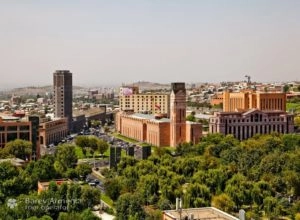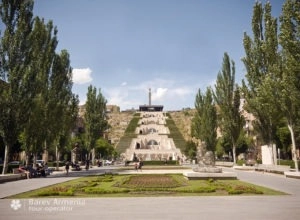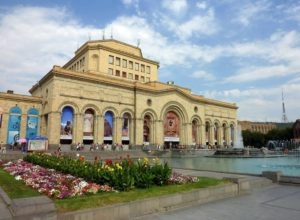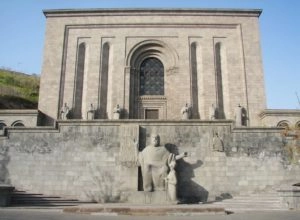The Armenian Genocide Museum

Founded: 1995
Architects: Kalashyan, Tarkhanyan
Theme: History
Working days: Tue-Sun
Opening hours: 11:00-16:00
Institute of Ancient Manuscripts after Mesrop Mashtots, commonly referred to as “Matenadaran”, is one of the most ancient manuscript repositories in the world. It holds one of the world’s richest depositories of medieval manuscripts and books, which span a broad range of subjects, including history, philosophy, medicine, literature, art history and cosmography in Armenian and many other languages. The “Matenadaran” collection was inscribed on UNESCO’s Memory of the World Register in 1997 in recognition of its world significance.
The earliest mention of the Armenian term “Matenadaran”, which is translated as “repository of manuscripts” in Armenian, was recorded in the writings of the 5th century Armenian historian Ghazar Parpetsi, who mentioned about the existence of the repository in Ejmiatsin, the Mother See of the Armenian Church, where Greek and Armenian language texts were kept.
In the course of the following centuries the dissolution of the Bagratuni Kingdom of Armenia in 1045, thousands of manuscripts were destroyed by the Turkic-Mongol invasions. The Seljuk Turks burned over 10.000 Armenian manuscripts in Baghaberd in 1170.
As a result Armenia was a constant battleground between two major powers, “Matenadaran” in Ejmiatsin was damaged several times, the last of which took place in 1804. The inclusion of Eastern Armenia into the Russian Empire in the 19th century provided a more stable atmosphere for the preservation of the remaining manuscripts.
In 1828 “Matenadaran” catalogued a collection of only 1.809 manuscripts, while in 1914 the collection increased to 4.660 manuscripts. At the outbreak of World War I all the manuscripts were sent to Moscow for safekeeping and were kept there during the war. They were returned in 1922. A decade later the collection was moved to Yerevan and stored at the State Library after Alexander Myasnikyan.
Finally on March 3, 1959, the Council of Ministers of the Armenian Soviet Socialist Republic voted in support of the establishment of “Matenadaran” to preserve and house the manuscripts in a new building and in 1962 it was named after Saint Mesrop Mashtots, the creator of the Armenian alphabet.
On May 14, 2009, on the fiftieth anniversary of the founding of “Matenadaran”, Armenian state and religious officials conducted the groundbreaking ceremony of the building of a research institute being constructed adjacent to Matenadaran. The opening of the building was held on September 21, 2011.
Today there is a collection of almost 17.000 manuscripts and 30.000 other documents in “Matenadaran”, referring subjects such as historiography, geography, philosophy, grammar, art history, medicine and science.
In the first decades of the Soviet regime its collection was largely drawn from manuscripts stored in ecclesiastical structures, schools, monasteries and churches in Armenia and the rest of the Soviet Union. In addition to the Armenian manuscripts, in “Matenadaran” there is also a vast collection of historical documents, numbering over 2.000 in languages such as Arabic, Persian, Hebrew, Japanese and Russian.







